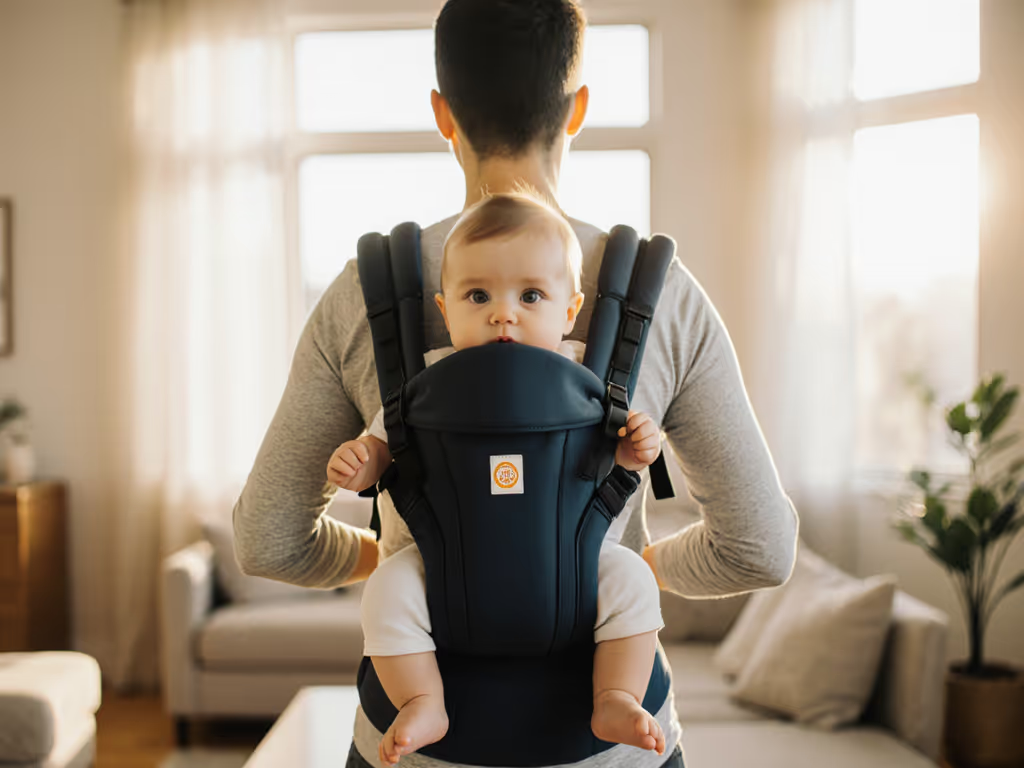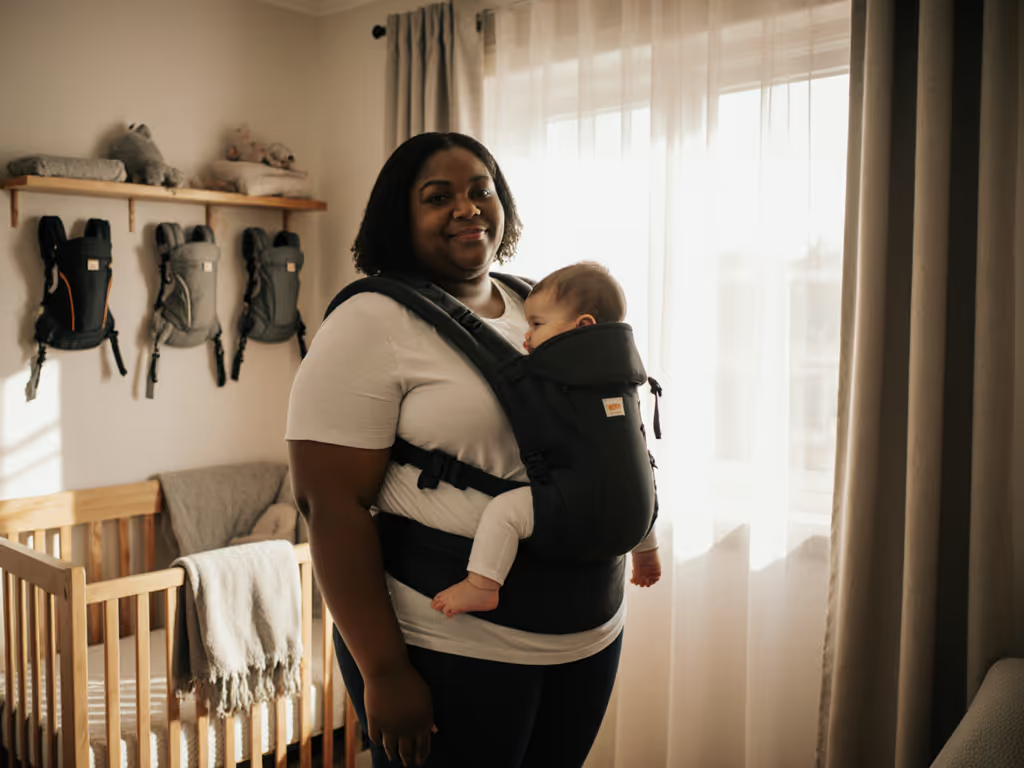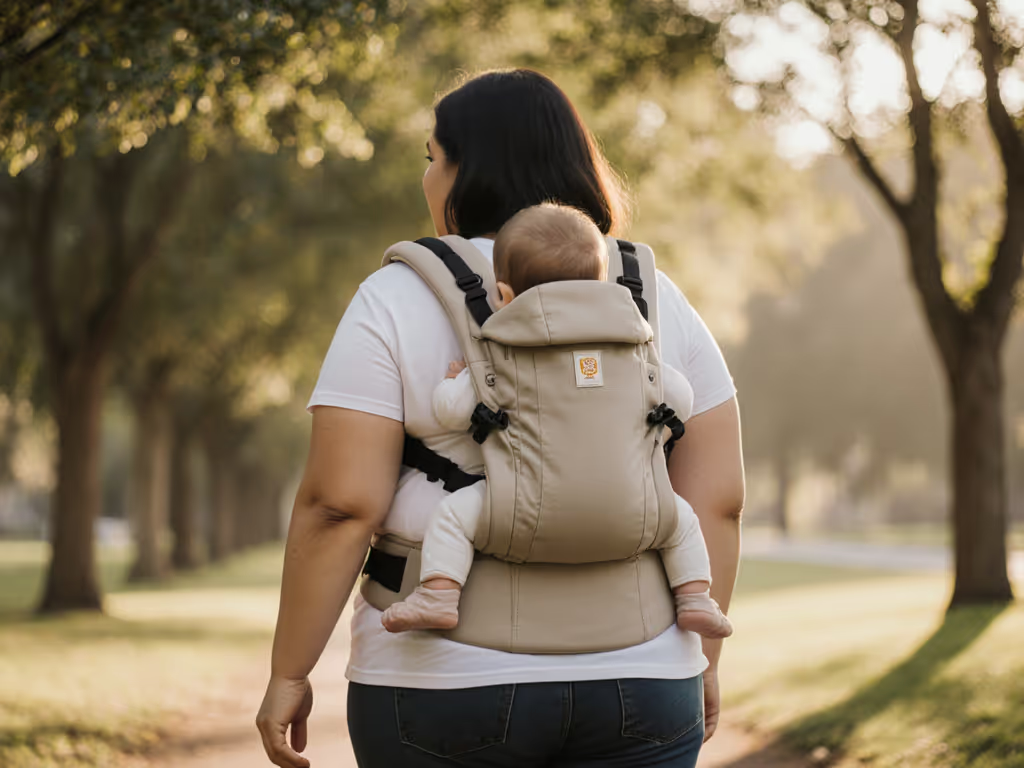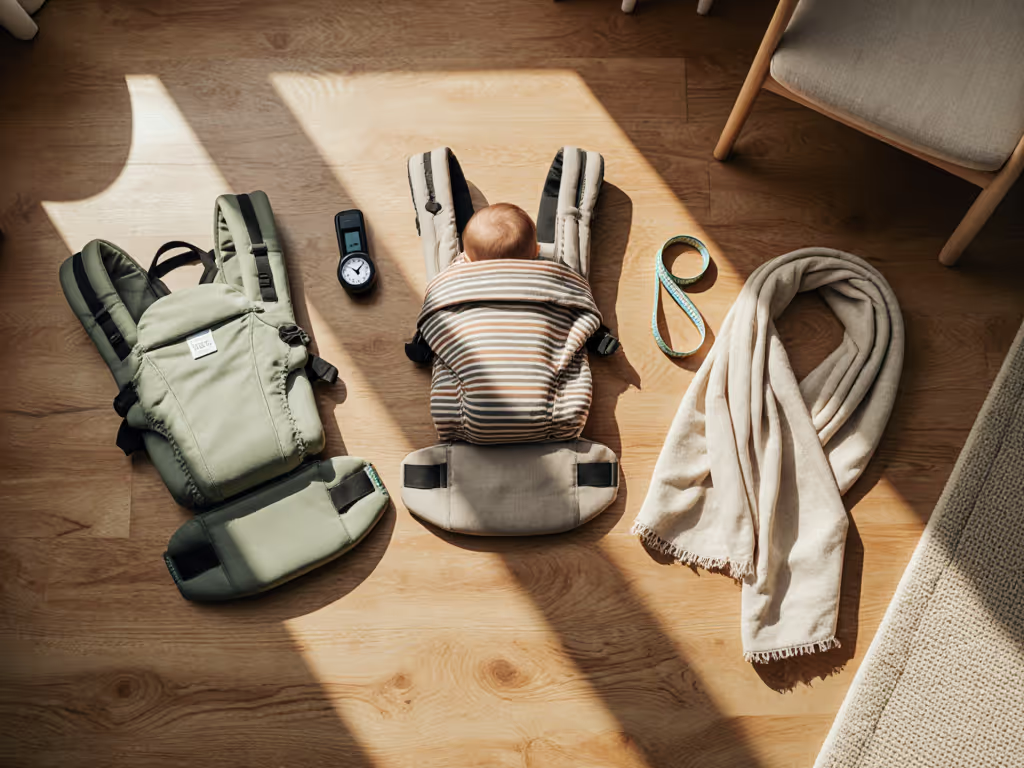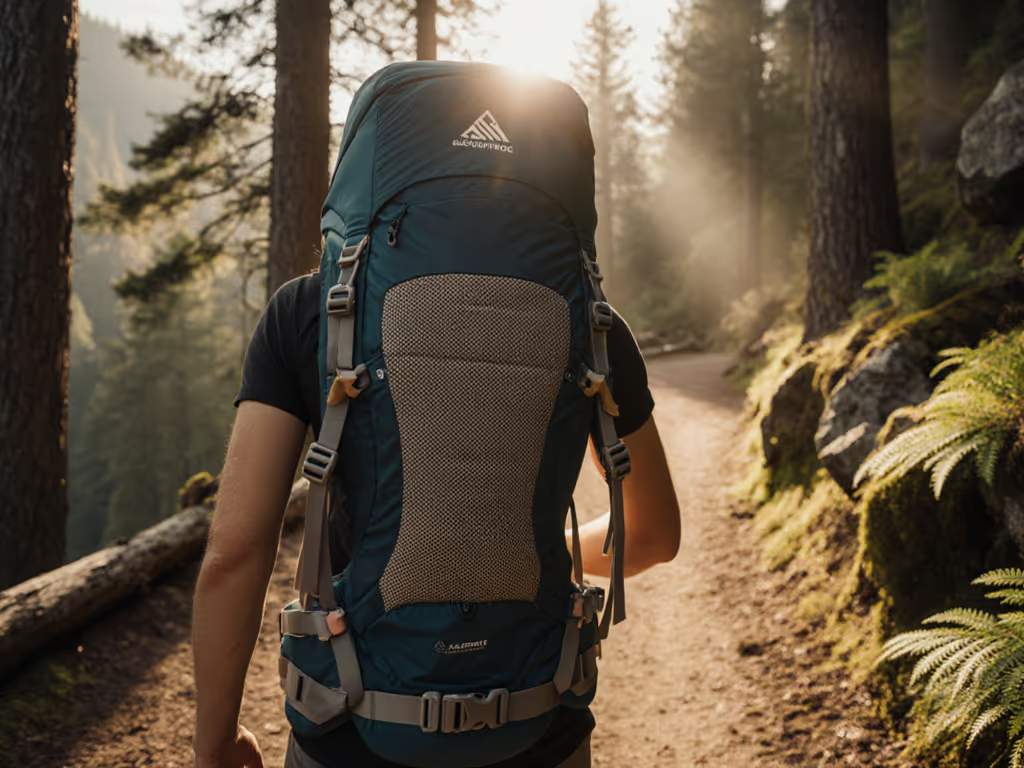When you're searching for baby carriers for plus size parents, the overwhelm is real. Will this one actually fit your frame? Will it feel secure with your body shape? How many times will you have to restart before you nail the setup? You deserve the best carriers for larger bodies that prioritize your comfort as much as your baby's, carriers that work with your body, not against it. In this guide, I'll share what I've learned testing dozens of carriers with 200+ caregivers of all shapes and sizes. Hands-free should feel stress-free.
Why Fit Matters: More Than Just Measurements
What should plus size parents prioritize when choosing carriers?
Height, chest size, torso length, shoulder width, and waist measurement all impact how a carrier fits. As Laura Brown, Child Passenger Safety Technician notes, "It's not just the waist. If you're broad shouldered, or have a larger chest, these affect how a carrier fits, as well as the size of a baby."
Based on extensive real-world testing, I recommend prioritizing these three elements:
- Adjustability range: Look for waistbands that extend to at least 54 inches (some go up to 60+), and shoulder straps that can cinch down fully
- Buckle placement: Better buckle placement (closer to one side of your body) makes it easier to secure without contorting
- Panel width: Wider carrier panels distribute baby's weight more evenly across your torso
Fast, calm setups turn chaos into competence you can feel.
Which carriers truly accommodate larger frames?
After testing 15+ carriers with caregivers ranging from size 12-4XL, these stood out for genuine inclusivity:
Tula Explore Mesh Carrier
This consistently earns top marks for mid-sized and plus size parents. The waist strap extends to 57 inches (or up to 63 inches with an extender), making it comfortable for sizes up to 4XL. The wide waist belt and extra padded shoulder straps help distribute baby's weight evenly, critical for those with larger chests. The breathable mesh is perfect for warm weather without sacrificing support.
Ergobaby Omni Breeze
Another soft structured carrier that earns rave reviews for mid-sized and plus size parents features a waist strap that extends to 57 inches. The padded, adjustable straps work well for broader shoulders, and the multiple carry positions (front, back, and hip) offer versatility as your baby grows. What sets it apart is how the weight distribution minimizes strain on your lower back, something many plus size parents specifically mentioned in testing.
Boba Classic Baby Carrier
This is our top pick for budget-conscious parents who still want quality. The Boba fits up to size 24 comfortably and includes an infant insert. One tester who's a size 22 shared: "The straps are comfortable and there isn't significant strain on my back. This product is truly plus size friendly (even for women with significant bosoms)."
Kinderpack
For parents with extremely large frames or specific mobility needs, the Kinderpack is exceptional. The waist belt extends to 60+ inches, and it's available in different sizes to fit various body types. Many plus size parents specifically praised its back carry position for reducing shoulder strain.
What are realistic setup times for plus size parents?
Let's address the elephant in the room: when you're exhausted at 2 a.m. with a crying baby, you need speed and simplicity. I timed three carriers half-asleep during one of those foggy nights (exactly the moment when setup time matters most, when nerves fray).
Here's what I found with plus size testers:
- Soft structured carriers: 45-90 seconds once familiar (Tula averaged 55 seconds)
- Ring slings: 20-40 seconds (excellent for quick trips)
- Wraps: 60-120+ seconds (steeper learning curve but beautiful once mastered)
The key isn't just speed, it's predictable setup. A carrier that takes 70 seconds consistently is better than one that sometimes takes 30 seconds but often requires restarting. Look for carriers with clear visual references and minimal steps.
How do I know if the fit is safe and comfortable?
This is where many parents get stuck. They're unsure if their carrier is properly adjusted. Here's your safety checkpoint checklist:
- Waistband position: Should sit comfortably above your hips, not riding up under your bust
- Shoulder strap adjustment: Straps should be snug but not digging in; excess length should be tucked away
- Baby's position: Knees higher than bottom (M-position), head supported if newborn, chin off chest
- Your posture: Should stand tall without hunching; able to look down at baby without straining
- Weight distribution: Most weight should rest on your hips, not shoulders
If you're feeling shoulder strain, the waistband is likely too low. If baby seems insecure, the panel may need adjusting higher. These gentle, time-stamped steps build confidence through repetition.
Tailoring Your Choice to Real Life
What about sharing between differently sized caregivers?
When multiple people wear the baby (a partner, grandparent, or babysitter), look for carriers with:
- Clear adjustment markers (visible lines where straps should be set for different users)
- Front-access buckles that both tall and shorter caregivers can reach
- Minimal re-adjustment between similar-sized wearers
The Tula Explore Mesh and Ergobaby Omni Breeze both excel here with their adjustable straps that can be preset for different users. One parent in my testing group (a size 16 mom and size 36 dad) could switch the Tula in under 30 seconds with no re-fitting needed.
How do I handle heat management while babywearing?
"Plus size babywearing" often comes with concerns about overheating. Breathable fabrics are non-negotiable:
- Mesh panels (like on the Tula Explore Mesh or Ergobaby Omni Breeze)
- 100% cotton (Boba Classic)
- Minimal layering (avoid carriers with foam padding in hot climates)
One tested strategy: wear a moisture-wicking shirt underneath your carrier. Most parents reported staying significantly cooler with this simple swap, especially important for "carriers for big and tall" users who generate more body heat.
What's the best approach for postpartum comfort?
For those recovering from birth, whether vaginal or cesarean, comfort is paramount. Look for:
- Soft, seamless waistbands that won't irritate incisions
- Adjustable height to keep baby higher on your torso if lower abdomen is tender
- No pressure points on hips or shoulders
The Lillebaby Complete stands out here with its lumbar support and six carrying positions, allowing you to find angles that avoid sore spots. "Comfortable carriers for larger frames" shouldn't compromise postpartum recovery, your body deserves respect during this delicate time.
Making Your Decision Stress-Free
Choosing among "adjustable baby carriers" can feel overwhelming when you're already stretched thin. The truth is, the "best" carrier is the one that fits your body comfortably, supports your baby safely, and works with your daily routine, not the one with the most features or highest price.
Before purchasing:
- Check actual measurements - don't rely on "one-size-fits-most" claims
- Watch real fit tests from people with similar body types to yours
- Time yourself setting it up 3-5 times to gauge your comfort level
- Test with your baby's weight - what fits empty may feel different with a 15+ pound toddler
Remember that confidence is built through repeatable steps, clear safety checks, and supportive feedback, not perfection. Start with short wearing sessions to build muscle memory, and don't hesitate to reach out to brands for virtual fit checks (many, like Tula, offer this free service).
Your journey with baby carriers for plus size parents begins with a single step, one that should feel secure, supportive, and completely yours. Take a deep breath, trust what you've learned here, and know that hands-free really can feel stress-free. Now go try that carrier on, the version of you who's confidently wearing baby awaits.
